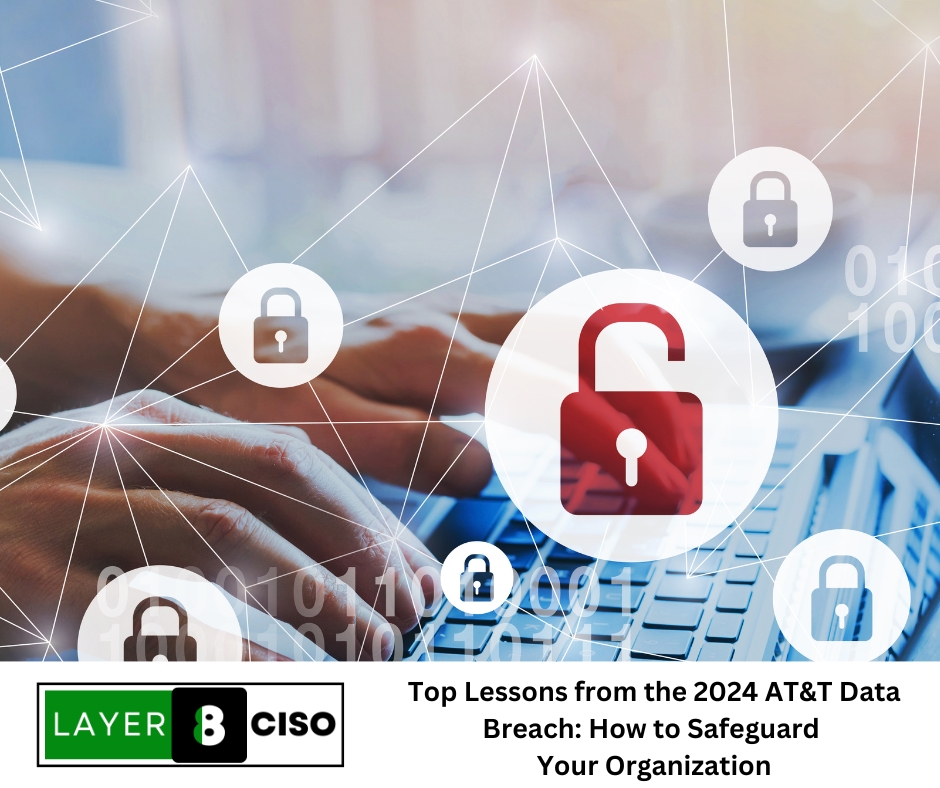Lessons Learned from the AT&T Data Breach in 2024 and How to Implement Them in Your Organization
In early 2024, AT&T, a telecommunications giant, suffered a significant data breach that exposed the sensitive information of millions of customers. This incident has become a cautionary tale for organizations worldwide, highlighting the critical importance of robust cybersecurity measures. As CISOs, we can glean valuable lessons from this breach to fortify our own defenses and safeguard our organizations. Here’s a comprehensive look at the key lessons learned from the AT&T data breach and actionable steps to implement them.
Understanding the AT&T Data Breach
Before diving into the lessons, it’s essential to understand what transpired during the AT&T data breach. Cybercriminals exploited a vulnerability in AT&T’s network, gaining unauthorized access to customer data, including personal information, account details, and even some financial records. The breach was facilitated by inadequate security protocols and delayed response times, which allowed the attackers to infiltrate and exfiltrate data over an extended period.
Lesson 1: Prioritize Regular Security Audits and Vulnerability Assessments
What Happened: The AT&T breach exploited an unpatched vulnerability in their network.
Actionable Step: Conduct regular security audits and vulnerability assessments. Ensure that all systems, networks, and applications are frequently scanned for vulnerabilities. Implement a robust patch management program to promptly address identified security gaps.
Lesson 2: Enhance Incident Detection and Response Capabilities
What Happened: The breach was exacerbated by delayed detection and response.
Actionable Step: Invest in advanced threat detection and incident response tools. Establish a Security Operations Center (SOC) that operates 24/7, equipped with the latest technologies in threat intelligence and monitoring. Develop and regularly update an incident response plan that outlines clear protocols for identifying, containing, and mitigating security incidents.
Lesson 3: Implement Zero Trust Architecture
What Happened: Attackers gained lateral movement within the network due to insufficient internal segmentation.
Actionable Step: Adopt a Zero Trust architecture that operates on the principle of “never trust, always verify.” Implement strict access controls and network segmentation to limit the movement of attackers within the network. Ensure that every access request is authenticated, authorized, and encrypted, regardless of its origin.
Lesson 4: Strengthen Employee Training and Awareness Programs
What Happened: Social engineering tactics were used to gain initial access.
Actionable Step: Regularly conduct cybersecurity awareness training for all employees. Emphasize the importance of recognizing phishing attempts, securing passwords, and reporting suspicious activities. Use simulated phishing attacks to test and improve employee vigilance.
Lesson 5: Secure Third-Party Integrations
What Happened: Third-party vendors were implicated in the breach, highlighting weak links in the supply chain.
Actionable Step: Conduct thorough security assessments of all third-party vendors and integrate security requirements into contracts. Regularly audit third-party security practices and ensure they comply with your organization’s security policies. Limit third-party access to only what is necessary for their function and monitor their activities closely.
Lesson 6: Encrypt Sensitive Data
What Happened: Unencrypted sensitive data was accessed and exfiltrated.
Actionable Step: Ensure that all sensitive data is encrypted both in transit and at rest. Use strong encryption standards and regularly update encryption protocols to protect against evolving threats. Implement data loss prevention (DLP) solutions to monitor and control data flow within and outside the organization.
Lesson 7: Establish Clear Communication Channels
What Happened: Delayed and inadequate communication exacerbated the fallout from the breach.
Actionable Step: Develop a comprehensive communication plan for cybersecurity incidents. Ensure that clear, transparent, and timely information is provided to stakeholders, including employees, customers, and regulatory bodies. Regularly test and update communication protocols to ensure they are effective during a crisis.
Lesson 8: Monitor and Respond to Insider Threats
What Happened: Insider threats contributed to the breach, either through malicious intent or negligence.
Actionable Step: Implement robust insider threat detection programs. Use behavior analytics to identify anomalous activities that may indicate insider threats. Establish strict access controls and monitor employee activities for signs of potential risks. Encourage a culture of security where employees feel responsible for protecting organizational data.
Conclusion
The AT&T data breach of 2024 serves as a stark reminder of the importance of proactive cybersecurity measures. By learning from this incident and implementing the lessons outlined above, organizations can enhance their security posture and better protect against future threats. As CISOs, it is our responsibility to continuously evolve our strategies, stay informed about emerging threats, and foster a culture of security within our organizations.
Implementing these lessons not only mitigates the risk of breaches but also builds trust with customers and stakeholders, ensuring the long-term success and resilience of our organizations.
For more insights and expert guidance on implementing robust cybersecurity measures, contact Layer 8 CISO. Our team of experienced professionals is dedicated to helping you build a secure and resilient IT environment.

